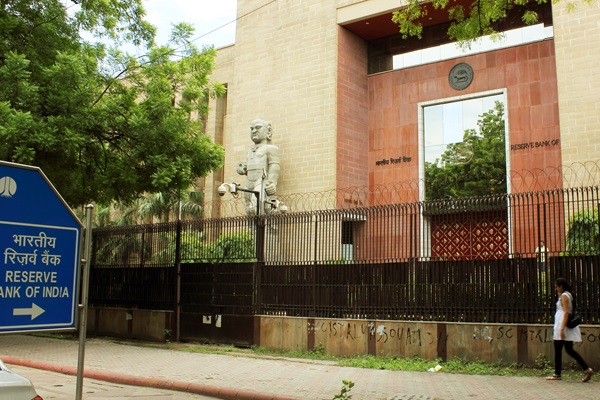.png)
Gurumurthy, ex-central banker and a Wharton alum, managed the rupee and forex reserves, government debt and played a key role in drafting India's Financial Stability Reports.
May 19, 2025 at 5:11 AM IST
Introduced by the Reserve Bank of India on June 5, 2000, the Liquidity Adjustment Facility, or LAF, has undergone a remarkable transformation. Initially conceived as a mechanism to help banks manage short-term liquidity mismatches and to provide a corridor for overnight interest rates, the LAF has since evolved into a cornerstone of India’s monetary operations, serving both as a tool for liquidity management and often as a signal of the RBI’s policy stance.
The broader economic reforms of the 1990s, which aimed to shift India from a dirigiste to a more market-oriented economy, required bold steps in interest rate deregulation.
Key among these were the discontinuation of automatic monetisation of government deficits through ad hoc treasury bills and the adoption of market-based government securities auctions. This transition was underpinned by a critical change in liquidity management, the establishment of the LAF.
At its inception, the LAF featured daily fixed-rate repo and reverse repo operations, allowing banks to borrow funds against eligible securities or park surplus funds with the central bank. Interestingly, in the early years, what we now define as "repos" and "reverse repos" were labelled differently, from the central bank’s perspective, until definitions were aligned with global standards in 2006.
These basic tools helped manage systemic liquidity and enabled a shift away from reserve targeting towards stabilising short-term interest rates. As interest rate liberalisation progressed, the limitations of the earlier monetary targeting framework became apparent.
In 1998, the RBI adopted a Multiple Indicator Approach, which signalled a shift from relying on a single nominal anchor to using a broader set of indicators, with interest rates taking precedence as operational targets.
The evolution of the LAF mirrored this transition. Over time, the LAF was refined, eventually also supporting the growth of the government securities market and displacing several sector-specific liquidity windows.
While designed to serve systemic liquidity needs, its access remained restricted to scheduled commercial banks and primary dealers, even as the boundaries between banks and other financial institutions began to blur due to developments such as Basel liquidity norms and the expansion of the mutual fund industry.
The biggest conceptual shift came with the move towards flexible inflation targeting. The Expert Committee to Revise and Strengthen the Monetary Policy Framework proposed significant reforms. In the first phase, the weighted average call rate was to serve as the operating target, with the repo rate as the single policy rate.
Liquidity provision was to shift from overnight operations to the 14-day term repo. In the second phase, the 14-day term repo would become the operational target once the 14-day repo stabilised.
The committee strongly argued that reliance on overnight repos had turned the LAF into a de facto standing facility, undermining market development and risk pricing. Acting on these recommendations, the RBI in 2020 began using variable rate 14-day repos and reverse repos as the primary liquidity tools, aiming to improve durable liquidity and reduce dependence on overnight funding. Nevertheless, bankers argue that in a 24/7 banking environment, the need for a daily liquidity tool remains vital.
Thus, the LAF’s history is filled with certainty, ambiguity, and uncertainty, a vacillation between maintaining overnight market rates around the policy target on the one hand, and concerns over “giving too much comfort” to the markets on the other.
As if that was not enough, policy quirks at times added to the complications, for instance, occasions when rates were modulated not in terms of the usual 25-basis-point lots but in 40 or 35 lots, raising the question: why should the width of the corridor be in multiples of 25 bps at all? Why not 35 or 40?
Despite its design, the LAF has not always succeeded in anchoring short-term rates within its corridor, more about the anchor in Part 3 of this article. During episodes of liquidity surplus or deficit, market rates, particularly the call money rate, have frequently breached the LAF boundaries.
The LAF is confined to scheduled banks and primary dealers, excluding non-bank financial institutions that play a significant role in influencing liquidity. While access to central bank funds may justifiably be restricted, the rationale for limiting their participation in liquidity absorption operations, such as reverse repos, is less clear, particularly when maintaining the lower bound of the corridor depends on broader systemic participation.
Effective use of the LAF hinges on the RBI’s ability to forecast system liquidity accurately. Given India's dynamic macro-financial environment, marked by volatile capital flows, fluctuating government balances, and changing credit demand, this remains a major operational challenge.
Overnight rates also become more predictable with a narrower operating corridor, simultaneously leading to a smoother term curve. In a regime where rate increment is in 25-bps parcel, should Repo /SDF corridor be wider than that? Any liquidity swing can simply do away with the supposed policy rate movement.
An intriguing concern for the esoteric is whether the government securities market genuinely incorporates policy rate signals or is increasingly driven by carry trades, thanks to the LAF. The conjecture is that a predominant role of the LAF in systemic liquidity management has made the information content of government securities, particularly money market instruments, less pronounced.
Over the past 25 years, the LAF has evolved from a functional liquidity tool to a central instrument of monetary policy. Its framework has supported greater market orientation, flexibility, and transparency. Yet, structural and operational limitations, such as inconsistent transmission, limited access, forecasting complexity, and at times ambiguous objectives, along with multiple policy rates, continue to challenge its effectiveness.
The persistence of anomalies like call rate volatility underscores the need for further reforms to deepen money markets, widen participation, and improve real-time liquidity assessment. As India's financial system matures, so must the tools that guide it, starting with a more inclusive and adaptive LAF.
This is Part 1 of a three-part series marking 25 years of India’s Liquidity Adjustment Facility. It traces how the LAF evolved from an interim liquidity tool into the operational core of monetary policy. Part 2 examines the corridor framework and the Standing Deposit Facility’s role as the new floor. Part 3 will question whether the call money rate, once central to signalling, still belongs at the heart of the corridor. add this in italics and appropriate hyperlinks.




